Roshelle Amundson, Applied Writing and English Department
About the Professor
Roshelle Amundson has been teaching at UW-Green Bay since 2019. Amundson has also been an adjunct professor and a Dean of Faculty in Minneapolis, MN. She holds an MFA in Creative Writing from Goddard College and a BA in Professional Communications from Metropolitan State University.
Assignment Title
Positively Awful Visual “Non-Aid”
Strategy
Students learn how to create appropriate visual aids for rhetorical success and develop speaker ethos by executing the opposite of the objectives of these important speaking tools.
Description
This low-pressure assignment given early in the semester is implemented primarily for student engagement and retention. A “break all of the rules” assessment is a refreshing change from read/watch/mirror/apply with the expectation that students are held to the standards of the ideal. Several semesters into this approach, students continue to report how much fun they have with the assignment, and early in the semester in an asynchronous course, that is a win. This assignment is especially impactful in Lower Level, Gen Eds, or other courses when students often have performance/content/expectations anxiety. Students are asked to reflect on an assignment and its learning outcomes, and then based on what they’ve learned, apply the exact opposite.
Modality and Context
This activity is created for asynchronous classes but could be used in any modality. The task is specific to a Communications class creating visual aids to scaffold a persuasive speech. However, many courses use visual aids, so this activity can be replicated for that purpose. Further, the “break all of the rules” spirit could be applied across disciplines and assessment types. Amundson employs this “do it wrong” strategy in her literature and writing classes as well.
Purpose
This low-stakes assignment is designed to teach learning outcomes by flipping the script of what is right or correct. Professor Amundson teaches multiple learning objectives by giving students permission to create the worst possible visual aids given the learning objectives.
Here is the purpose as written into the assignment for the course:
We now have an initial understanding of the salience of speaker Ethos, and we understand the numerous facets to establish it. As we’ve discussed, visual aids are one of those factors. The goal here is to apply what not to do as that becomes its own form of muscle memory. My hope is that having the chance to do an absurd assignment to meet course objectives is a refreshing change from a standard “make a formal PowerPoint” — which you’ll have plenty of opportunity to do throughout the term. The worse these are — the better!
Assignment Details
Positively Awful Visual Non-aid
This is an assignment for Professor Amundson’s Communication 133 course. The learning objectives for this assignment are:
- Enhance Audience Understanding: Simplify complex information, making key points easier to grasp through visuals like charts, graphs, or images.
- Increase Engagement: Capture and maintain the audience’s attention, making the presentation more dynamic and interactive.
- Support Key Messages: Reinforce the speaker’s main ideas, ensuring they are clearly communicated and memorable.
- Improve Retention: Help the audience retain information by pairing visuals with the spoken message for better recall.
- Promote Clarity and Simplicity: Use visuals to clarify difficult concepts and make the presentation more accessible and understandable.
Students are asked not to meet any of these learning objectives; rather, they are to try to decrease rather than increase Speaker Ethos on a “mopic”- (mock topic). Students create poor visual aids, post them to a discussion board, and discuss which is the worst. See a partial example of a Power Point presentation below from a student discussing the rising cost of avocados.

Applying This Strategy to Your Courses
Many courses use presentation activities as a part of the curriculum and often students need some instruction in good presentation skills before such assignments. This kind of activity could easily be included in those lessons. In addition, Professor Amundson also shared, “While this strategy may not work for every course, the idea of breaking out of the standard approach of read/watch/mirror/apply is refreshing for students and for me as the instructor. I think when we are willing to take risks and let go a bit, we can increase the enjoyment of the learning experience for our students.”


 Utilizing Canvas discussion boards as interactive debate platforms for real world, immediate problems. This strategy was one of two awarded the People’s Choice award for the Canvas Gallery.
Utilizing Canvas discussion boards as interactive debate platforms for real world, immediate problems. This strategy was one of two awarded the People’s Choice award for the Canvas Gallery.

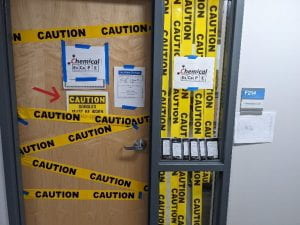 When Professor Lybbert began thinking about escape rooms, they were all the rage. She discovered an article in the Journal of Chemistry Education, which described, in detail, a Lab-Based Chemical Escape Room. The article describes a scenario in which four bombs are set to explode unless the chemists in the room are able to neutralize them. The scenario presented used the kinds of puzzles those familiar with escape rooms might be used to, but in order to solve these puzzles, chemistry knowledge would also come into play. This is what Professor Lybbert used as a guide to create her own physical escape room inside her classroom. More than just creating a fun activity, she created an environment designed to immerse her students in the escape room, complete with yellow caution tape, scary music, and a countdown timer. Her students get a full hour to work as a team to solve this puzzle.
When Professor Lybbert began thinking about escape rooms, they were all the rage. She discovered an article in the Journal of Chemistry Education, which described, in detail, a Lab-Based Chemical Escape Room. The article describes a scenario in which four bombs are set to explode unless the chemists in the room are able to neutralize them. The scenario presented used the kinds of puzzles those familiar with escape rooms might be used to, but in order to solve these puzzles, chemistry knowledge would also come into play. This is what Professor Lybbert used as a guide to create her own physical escape room inside her classroom. More than just creating a fun activity, she created an environment designed to immerse her students in the escape room, complete with yellow caution tape, scary music, and a countdown timer. Her students get a full hour to work as a team to solve this puzzle.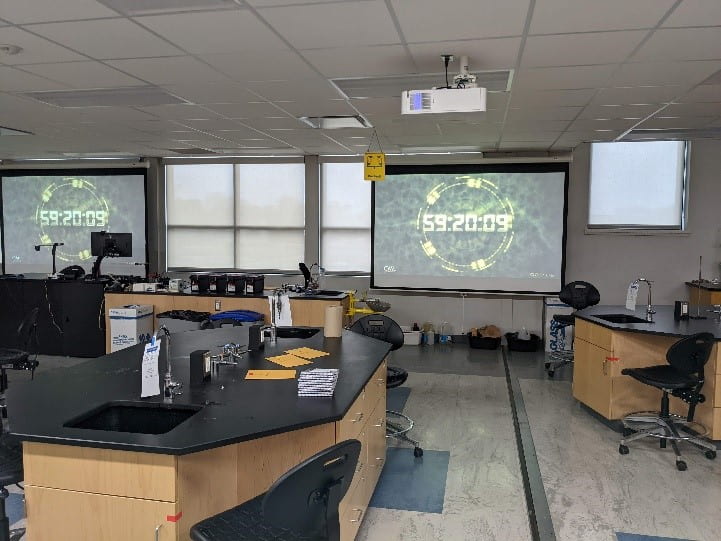
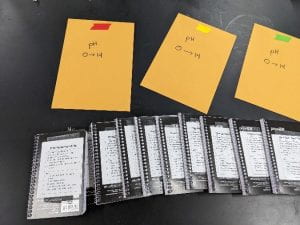 Students have the opportunity to use the knowledge they’ve gained throughout the course of the semester in a low-stakes (but heightened-intensity) lab activity that gives them the chance to reflect on their learning once the adrenaline has passed. Although not perfectly a real-world scenario, students do realize that they can use their knowledge when the time counts!
Students have the opportunity to use the knowledge they’ve gained throughout the course of the semester in a low-stakes (but heightened-intensity) lab activity that gives them the chance to reflect on their learning once the adrenaline has passed. Although not perfectly a real-world scenario, students do realize that they can use their knowledge when the time counts!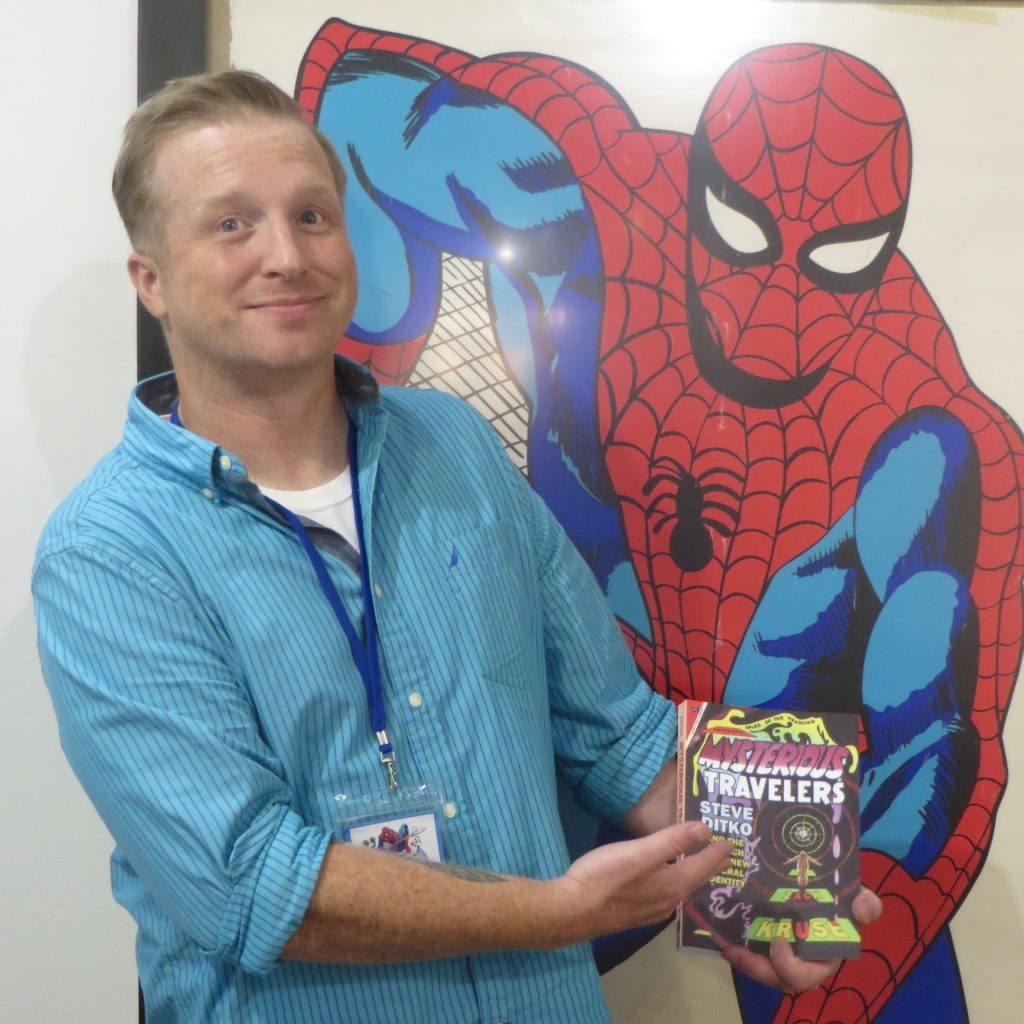

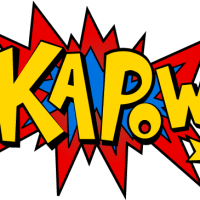
 Professor Kruse has used the following comic books in his classroom. Some of those comic studies have included author visits. Professor Kruse uses a multitude of others not listed here and would be happy to offer recommendations if you’d like to integrate some of these works into your own classroom.
Professor Kruse has used the following comic books in his classroom. Some of those comic studies have included author visits. Professor Kruse uses a multitude of others not listed here and would be happy to offer recommendations if you’d like to integrate some of these works into your own classroom.